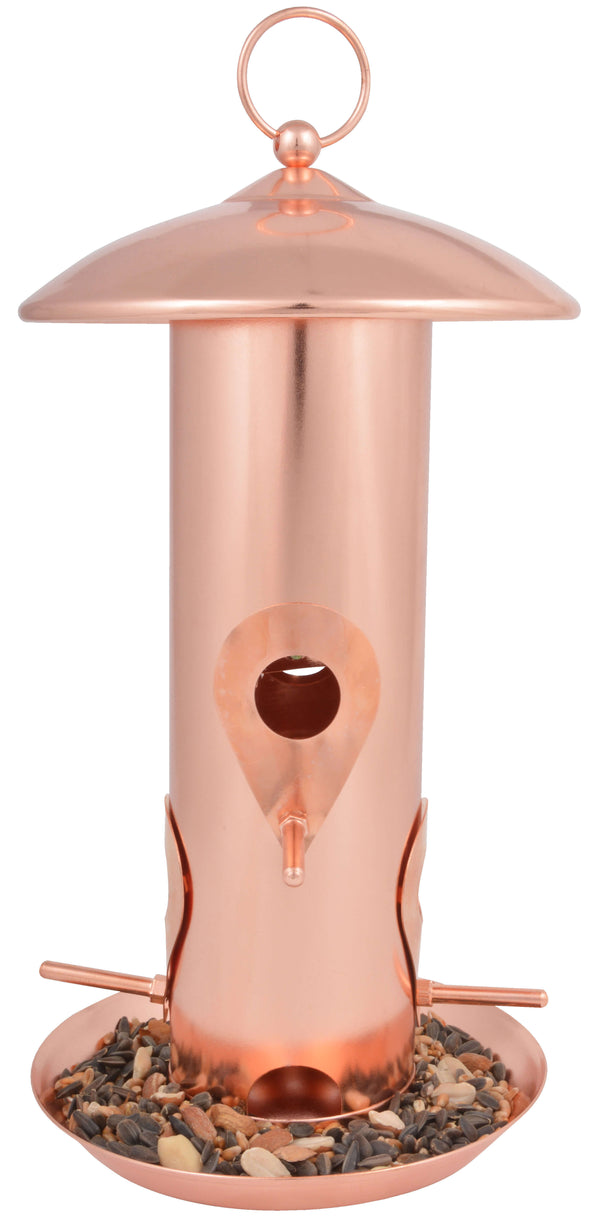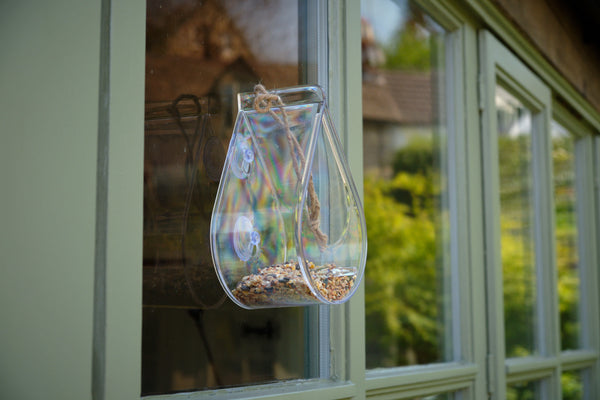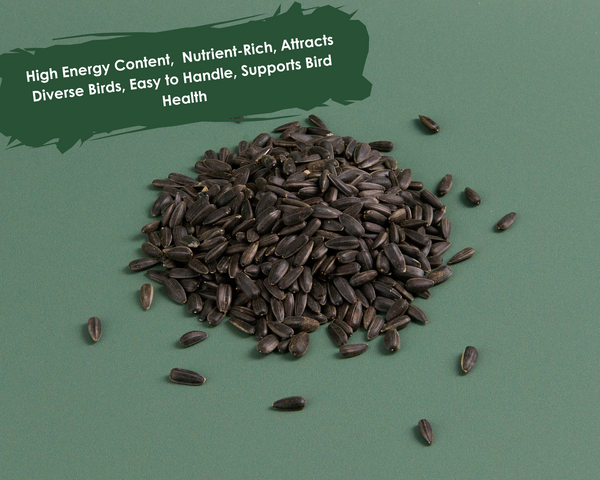Where to hang bird feeders
Bird feeders are one of the most popular ways to care for local wildlife to you. They allow you to be sure that you can make your garden somewhat of a sanctuary, while also avoiding having to go out of your way to construct habitats for birds.
In this article, we're going to share everything there is to know about bird feeders, and how best to use them for garden birds.
How to attract birds to your bird feeder

A great feeding station in your garden is sure to attract a few hungry birds that would love a bite to eat. To ensure that you're able to get them in your garden, there are a few things to bear in mind with your bird feeder itself.
Ergonomics
The ergonomics of a feeder are important to ensure that any bird can simply land on the feeder and eat from it. For example, a bird feeding pole or hanging feeders both need to have the same core concept, here - the birds must have a way to comfortably sit on the feeding station so that they can eat without great difficulty.
Colour
The colour of a bird feeder isn't something that a lot of people might consider. The reality of the situation is that bright colours can confuse our feathered friends. A great example of this is in scientific studies - coloured leg bands can make birds more desirable to the opposite sex, which skews the results of studies.
Aim for neutral colours

Filling
You can fill differently shaped bird feeders with different fillings. For example, cylindrical bird feeders are often filled with nuts or seeds, while fat balls may be added to other shapes of bird feeding stations.
It's important to consider that you're offering the correct type of food for the feeder you're using.
Think about nearby food sources
Not only do you need to consider what local birds may like or dislike, but also consider what they may already have access to. If your neighbour has a bird table with fat balls on it, you'd likely be better served by a bird feeding station that is filled with alternative food.
Where to hang feeders in your garden

For a moment or two, pretend that you're the type of small bird that you'd like to see. Knowing that you're small, cold, and like to be sheltered, consider places in your garden that fit the bill.
For example, offering bird food in window feeders may be ideal if your window is situated with an awning above it, or near a wall or fence. If you're offering bird food in this way on the side of a tower block, it's less likely that you'll end up attracting birds.A good rule of thumb for a freestanding feeding station is to place it within a few meters of shrubbery.
The feeding tray, in that situation, will be far enough from the plant life that the food won't rot, but it will be close enough for birds to bid a hasty retreat if necessary.
How to choose the best spot in your garden for a bird feeder
The best spot in your garden for a bird feeder is the spot that balances safety and accessibility.
By this, we mean that feeders can be put up on a fence panel or something similar, but they ought to be put up with plenty of space to allow birds to swoop down onto the feeder itself.
Feeding birds from the ground
If you don't have that many different places that fit that bill, then we might suggest catering for ground feeders, such as pigeons. These birds generally eat slightly larger wild bird seeds and nuts than small birds like blue tits, meaning that you can sprinkle their food on the floor.
For the first few times that you do this, feed ground-dwelling birds a reasonable distance from your home. To attract birds to your garden, you first need to ensure that they learn it's safe - they're unwilling to want to come right up to your door.
How high should a bird feeder be off the ground?

Bird feeders can be a range of height from the ground, but the general consensus is that you should aim for them to be between 1.5 and 2 meters from the ground.
A good way to figure this out without a tape measure is simply to place the feeder at head height - most people are between those two heights, which means that the height most people consider to be head height is roughly correct.Of course, you can adjust this for the birds local to you. The one thing we would always suggest, though, is that the higher a feeding station is, the more sure you are that it is properly secured to the ground.
You don't want passing birds to land on a three-meter high platform, only to have them disturb the delicate balance, and knock your bird feeders over.
Is it possible to place feeders in trees?
It is possible to have garden birds visit by hanging feeders from tree branches.
To do this with the aim of feeding more birds than other feeders might, we would suggest hanging the feeder on a relatively low branch.For the best result, the feeder should dangle a few inches clear of the base of the tree (provided it's still within that 1.5-2m height range) such that birds can swoop in easily, while still feeling protected by the cover of the tree.
How to help birds use a feeder
A great way to help birds use a feeder is to place it within or nearby some natural shelter in your garden.
Using native plants, you should be able to create some semblances of windbreaks and natural barriers from predators.
This prevents birds from being at a good vantage point for predators, allowing them to use bird feeders without being too concerned about actually getting eaten.
How to prepare the ground underneath a bird feeder
The area underneath bird feeders is likely to get messy. Not only can there be plenty of droppings and discarded nest materials, but it's also fairly likely that you'll end up with dropped seeds, or simply seeds that the birds decide they don't like too much.
To help the area under a bird feeding station, we'd suggest regularly sweeping the ground.
This will break up anything that is left there on the floor, allowing you to easily have a tidier area.
When disturbed from the floor, wind and other weather will be able to carry any detritus away.
With that said, you could take another course - have the ground be naturally disturbed by ground-feeding birds.
Ground feeding birds
Feeding birds in this way will mean that they regularly come and walk across the ground underneath your bird feeders, disturbing the soil, leading to the ground being naturally made a reliable level of neat.
This is a tricky balance to strike, but we're sure you'll be able to make it happen with a little trial and error!
How close to your house can you hang bird feeders?
You can place bird feeders exceptionally close to your home without any kind of negative consequences and you can even invest in a window bird feeder if you want to see them up close and personal.
Granted, you are taking the chances into your own hands a little, but hanging a feeder by your kitchen window likely won't result in too many window collisions.
To be entirely sure that you avoid having birds colliding against your house, we would suggest placing the feeders at least two meters from your house. This will mean that the birds can feed without too much notice, human traffic, or bother from cats.










